In this article, we consider what the global crisis is. In general, the economic downturn is characterized by a decline in production, which is happening on a massive scale. The deficit usually appears due to non-economic factors and is associated with the disruption of the natural course of (economic) production under the influence of political actions (various wars, prohibitions, etc.) or natural disasters.
The global crisis of overproduction is marked by an increase in the number of products that exceeds the real demand of customers, followed by the collapse of the national economy. The first impressive interruptions of a similar type arose in England in the 17th century. Thanks to the development of the industrial market economy, overproduction disorders have acquired a certain cyclical nature and at the moment are one of the phases of the economic cycle.
First collapse
The collapse of the national economy is the decline in real national gross domestic product, massive unemployment and bankruptcy, the decline in living standards. The first world crisis began in 1857 and lasted about a year. As in past times, the most powerful blow had to withstand Britain - the main trading and industrial power. Interestingly, the collapse in the United States began, and then it hit Germany and France.
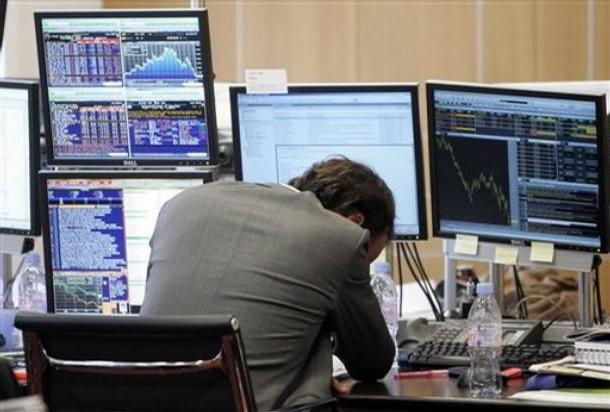
Gold reserves
The crises of the XIX century occurred in the conditions of a stable monetary order based on gold. Silver was still recognized as money metal, but its mission failed. Great Britain was the first of the largest states to adopt the gold standard system. Of course, not only gold coins were considered money, whose share, by the way, in the money supply was rapidly declining. Banking money was exchanged for gold at face value, which was ultimately guaranteed by the gold breadbasket of the World Bank. In England, and then in other states, laws were passed that determined the standards for covering banknotes with gold reserves. Paper inflation money was pushed to the periphery of that time.
The 1850s were a stage in the unprecedented rise of gold mining. Russia continued to mine metal on a massive scale, in 1848 luxury deposits were discovered in California, and in 1851 in Australia. From these distant places, gold flowed into the industrial states of the USA and Europe. Yellow metal pushed the construction of railways, the growth of industry, the establishment of banks and joint stock companies. He facilitated the approval and popularization of the golden cliché. The global crisis of the 1857-1858-ies is famous for the fact that the wholesale price index in America (by monthly indicators) fell by 16%, and the agricultural production index by 20%.

In general, a fall in prices was a signal and an integral part of the collapse. Deposited stocks increased by organizations, had to sell goods at a loss. That is why companies could not repay loans received at the best time and went bankrupt.
And vice versa, the mutual exchange rates fixed by the golden essence of each of them, during the collapse, remained the same, only slightly fluctuated - no more than 1-2%. The usual devaluation then was not applied with gold currencies as a means of economic strategy. Nevertheless, these changes in exchange rates were the most important mechanism that controlled the movement of gold between countries.
Tool
The central bank acted on money market and, through it, to the economy, with the help of the main and, perhaps, the only tool - the discount rate. This is the percentage at which commercial banks took loans.A loan was usually allocated by counting and accounting of bills: in this way, the central bank bought debt with a corresponding discount up to par before the expiration of the term.
Raising discount rate the main vault protected its gold reserves. When interest rates rose, it was unprofitable for commercial banks and other market members to exchange money and banknotes placed in bank accounts for gold and receive loans. Also high loan interest could attract monetary assets from abroad, and with them gold.
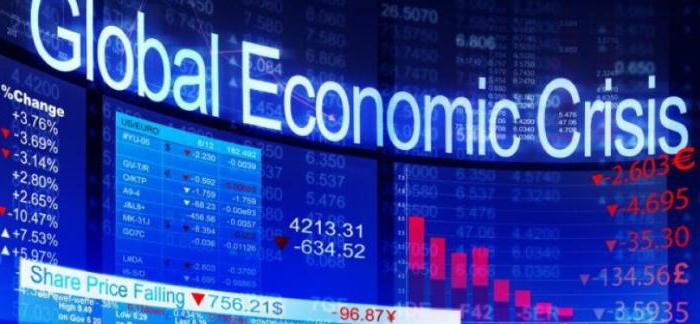
When the global crisis began, it was necessary to raise the discount rate. But these actions were a double-edged sword: the growth in the cost of credit doomed many companies to bankruptcy. In addition, the drop in demand for labor required for the development of production and for goods for investment was still increasing. All these nuances could only prolong and deepen the crisis. By the middle of the XIX century, some economic spheres (joint stock business and credit) rapidly evolved. Capitalism has matured and changed beyond recognition the life of the West European and North American people.
The Great Depression
What is the Great Depression? This is the global economic crisis that arose in 1929 and lasted until 1939. Therefore, the 1930s is called the period of the Great Depression.
This crisis most affected Britain, Canada, the USA, France and Germany. Of course, it was felt in other states. Most of all, industrial cities were in distress; in many countries, construction almost stopped. Due to a decrease in real demand, agricultural products fell in price by 40-60%.
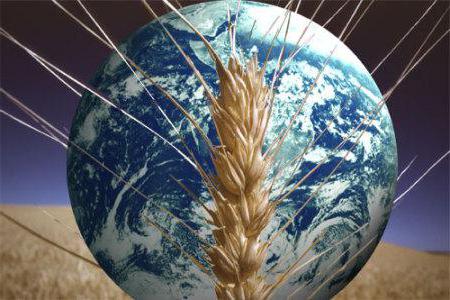
This global economic crisis has left an impressive mark on history. In the Russian annals, the term "Great Depression" is often used only in relation to the decline that occurred in the United States.
Origin
Shortly before the Great Depression in America in 1929, there was a stock market crash: on Black Thursday (October 24), stock prices suddenly fell. After a small short-term price increase on October 25, the collapse took on terrifying proportions - it happened on Black Monday (October 28) and Black Tuesday (October 29). It is believed that the Wall Street stock market crash took place on October 29, 1929. Interestingly, economists are still arguing about the causes of the Great Depression.
Crash
The global financial crisis of 2007-2008 began with mortgage disruptions in the United States, falling stock prices and bankruptcy of banks. This collapse paved the way for a global economic decline (some call it the “Great Recession”). The initial stage of the global economic and financial crisis came about thanks to the mortgage deficit in the USA, the first symptoms of which arose in 2006 in the form of a decrease in the number of buildings sold. By the spring of 2007, these interruptions escalated into a crisis of high-risk mortgage loans.
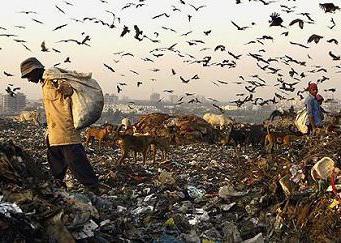
Very quickly, difficulties with lending were felt by serviceable borrowers. In the summer of 2007, the collapse from the mortgage began to transform into a monetary one - now it affected not only America. In fact, this global financial crisis has been developing steadily. Large banks began to go bankrupt; national governments tried to save them. Separately, the collapse of Lehman Brothers in 2008 on September 15 is noted. On stock markets in 2008 and early 2009, quotes suddenly dropped. For corporations, the chances of obtaining assets during the placement of securities are significantly reduced. In 2008, a decline swept the entire planet: production volumes everywhere decreased, the cost of raw materials and demand for it, unemployment increased.
Counting
According to estimates by the Washington University of World Finance, in 2007 and the beginning of 2008, banks in many countries wrote off $ 390 billion due to losses, most of which went to Europe.
According to data provided by academician V.M. Polterovich, in 2008 the value of American enterprises decreased by an average of 40%.In the basic markets of Europe, the collapse was 50%, while the indicators of stock exchange indices in Russia amounted to less than ¼ pre-crisis levels.
Income inequality
So, we continue to study the global crisis. The years in which he appeared will forever be noted in history. So, the turning point of the world economy, which was sharply outlined in 2008, has not been overcome to date. It appeared due to the financial deficit that arose in the USA. In scale, this collapse can only be compared with the Great Depression of the 1930s.
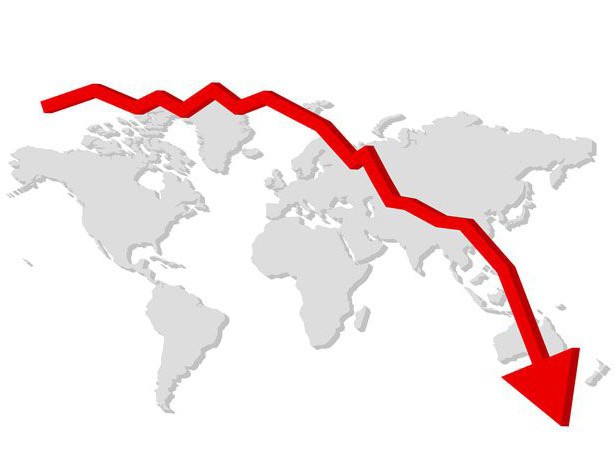
The consequences of the global crisis are terrible: international trade has declined by more than 10%, recreating volume only by 2011. But even now it lags far behind the growth rates that existed before the crisis began. World industry is degrading.
The collapse of the economy in the eurozone and the US ended in late 2009. However, in 2011, the second recession, the longest-running in its history, began in Europe. This stagnation lasted until 2013. After the critical phase of depression in 2008, the weakening of the middle class across the planet. At the same time, the share of the most affluent people in the global wealth exceeds 50% and is constantly growing.
Olivier Blanchard (IMF chief economist) noted in 2014 that when the effects of the global crisis are eliminated, the issue of income inequality will arise in macroeconomics.
The origins
How does the global crisis appear? The reasons for its occurrence are very different: the general frequency of economic progress, the imbalance of world trade and the movement of assets, overheating of the credit market, the emergence of a mortgage crisis.
In a January 2011 report, a special commission of the US Congress reported that the decline of 2008-2009 provoked financial adjustment failures, disruptions in corporate regulation, colossal household debts, widespread popularization of derivatives (“exotic” securities), and an increase in unmanaged “shadow” banking apparatus.

Kudrin Alexey (former Minister of Finance of the Russian Federation) in December 2011 reported that a second wave of collapse had already begun.
Grades
How is the current global crisis estimated? Briefly inform the opinions of professionals. Carmen Reinhart in January 2014 noted that in most countries today's difficulties can overshadow the Great Depression because of tension. She and Kenneth Rogoff predict that it will take another five years to revive the global economy.
IMF CEO C. Lagarde said in October 2014 that the global economy expects a long phase of small growth, impressive unemployment and geopolitical difficulties. By the way, at the beginning of 2015, many transnational economic structures, such as the OECD, IMF and the Interethnic Bank, studied global economic processes. As a result, they agreed that the collapse of 2008 continues to worsen.








